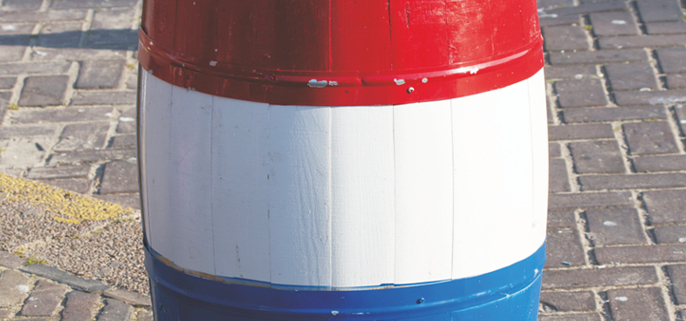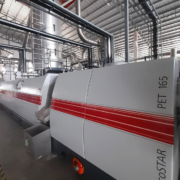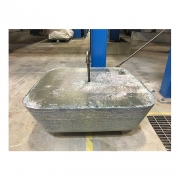France Needs a Long Breath
In the last 15 years, France’s raw material consumption has been exactly on the EU average and level. A new report by the European Environment Agency and European Topic Centre on Circular Economy and Resource Use shows what France did and wants to do to keep pace with the European transition to a circular economy.
Between 2010 and 2023, the raw material consumption in France totalized to 14.1 tons per person, which equaled the European average. In 2023, the domestic consumption consisted of 53.9 percent non-metallic minerals, 28.4 percent of biomass, 15 percent of fossil energy materials and 1.7 percent of metal ores. The use of domestic material in France added up to a total of 759.9 million.
Numerous measures
The existing policy framework includes a Circular Economy Roadmap adopted in 2018, an Anti-Waste Law in 2020, a Climate and Resilience Law in 2021 and – according to the paper – “numerous measures” to speed up the transition in the circular economy. Amongst EPR schemes provided by the anti-waste law, there is a number of new schemes for example for construction products and materials, sports articles as well as several sorts of oil and packaging. Additionally, in 2022, France introduced an ecological planning process to integrate an ecological transition “into all sectors of public action”, a process overseen by the General Secretariat for ecological planning. As part of the anti-waste law, a “3R strategy on plastic packaging” was introduced to reduce single-use plastic packaging by 20 percent and “unnecessary” single-use plastic packaging by 100 percent until the end of 2025. And a target of 100 percent recycling of single-use plastic packaging was set by January 2025.
Zero waste initiative launched
The mission of ADEME, the French Agency for Ecological Transition, comprises organizing and implementing the objectives outlined in the French Environmental Code. Following the Topic Centre-Report, “many French towns and cities launched zero waste initiatives”. 359 local authorities are supposed to be involved in the approach – covering almost 50 percent of the French population. Circular economy policy elements have been incorporated into public procurement and are part of the Waste Prevention Plan for 2021-2027. This plan includes a “Diagnosis of the Management of Products, Equipment, Materials, and Waste from the Demolition or Major Renovation of Buildings” (PEMW diagnosis), which is applied within the building sector. These elements are also integrated into the national low-carbon strategy.
Many aims set
Aside from French circular economic targets based on European legislation like the Waste Framework Directive, the Single Use Plastic Directive and directives concerning batteries or packaging, the nation has set many aims specific to its country. Amongst others: 30 percent resource reduction between 2010 and 2030, 15 percent prevention of household waste between 2010 and 2030, five percent reuse of packaging put into circulation in 2023, five percent of household waste prepared for reuse until 2030, 50 percent reduction of food waste by 2025, 100 percent recycled plastic by January 2025, and the creation of “300,000 additional jobs, including in new professions”. A repair bonus is deployed since December 2022 for electrical and electronic products, textiles and footwear.
There are targets for inert waste to be recovered by 77 percent, recycled by 35 percent by 2024, recovered by 88 percent, and recycled by 43 percent by 2027. Other waste streams are expected to be recovered by 48 percent and recycled by 39 percent by 2024 as well as recovered by 57 percent and recycled by 45 percent by 2027. Recycling targets have been set for concrete (60 percent by 2024), metal (90 percent by 2024), wood (42 percent by 2024; 45 by 2027), gypsum (19 percent by 2024; 37 by 2027), plastics (17 percent by 2024; 24 by 2027) and glass (4 percent by 2024; 18 by 2027). Targets for re-use (excluding backfill) are set at two percent in 2024 and four percent in 2027.
Support by “France 2030”
Several financial supporting programs targeting circular economy will help. “France 2030” for example is an investment plan worth 54 billion Euro over five years. It offers financial support among others for the development of recycling, in particular for “recyclability, recycling and reincorporation of materials”. It focusses especially on plastics including elastomers, composites, strategic metals, textiles and paper and cardboard. Another “France 2030” supported program created for IT products and services is called “Eco-responsible digital acceleration strategy” and aims to develop the eco-responsibility of the digital sector. With a total budget of 300 million Euro per year, ADEME manages a fund dedicated to support the development of the circular economy, focusing on sustainable consumption, on changes in organization and economic mechanism, on support for repair and reuse as well as on support for waste recycling and especially material recovery operations.
A “recovery plan”, implemented in 2021-2022, even made it possible to support the modernization of 26 household packaging and paper sorting centers, the modernization of around fifty sorting centers, more than 100 organizations to deploy over 15,000 selective sorting points, 130 projects for the organic recovery of bio-waste, 325 organizations in their projects to develop re-use and repair, nearly 500 investment projects for reduction, reuse and development of alternative solutions for plastic, and finally more than 350 projects for the production or incorporation of recycled plastics.
Recycling rates are changeful
In an “early warning assessment” published in June 2022, the European Environment Agency stated that France’s recycling rate has been steadily increasing from 42.9 percent in 2016 to 45.1 percent in 2018, however going down since then: In 2020 the recycling rate stood at 42.7 percent. In parallel, the landfilling rate decreased from 22.4 percent in 2016 to 18.1 percent in 2020. But the level of incineration of municipal waste generated, which has been stagnating at about 35 percent during the period 2016-2019, has gone up in 2020 to 38.1 percent. And Statista found out, that France’s plastic packaging recycling rate of 23 percent in 2021 was far away from Europe’s 2025 plastic packaging recycling target of 50 percent by 2025. France needs a long breath to change its domestic into a circular economy.
Source: European Topic Centre on Circular Economy and Resource Use
(Published in GLOBAL RECYCLING Magazine 1/2025, Page 26, Photo: Bittner KAUFBILD.de / stock.adobe.com)








